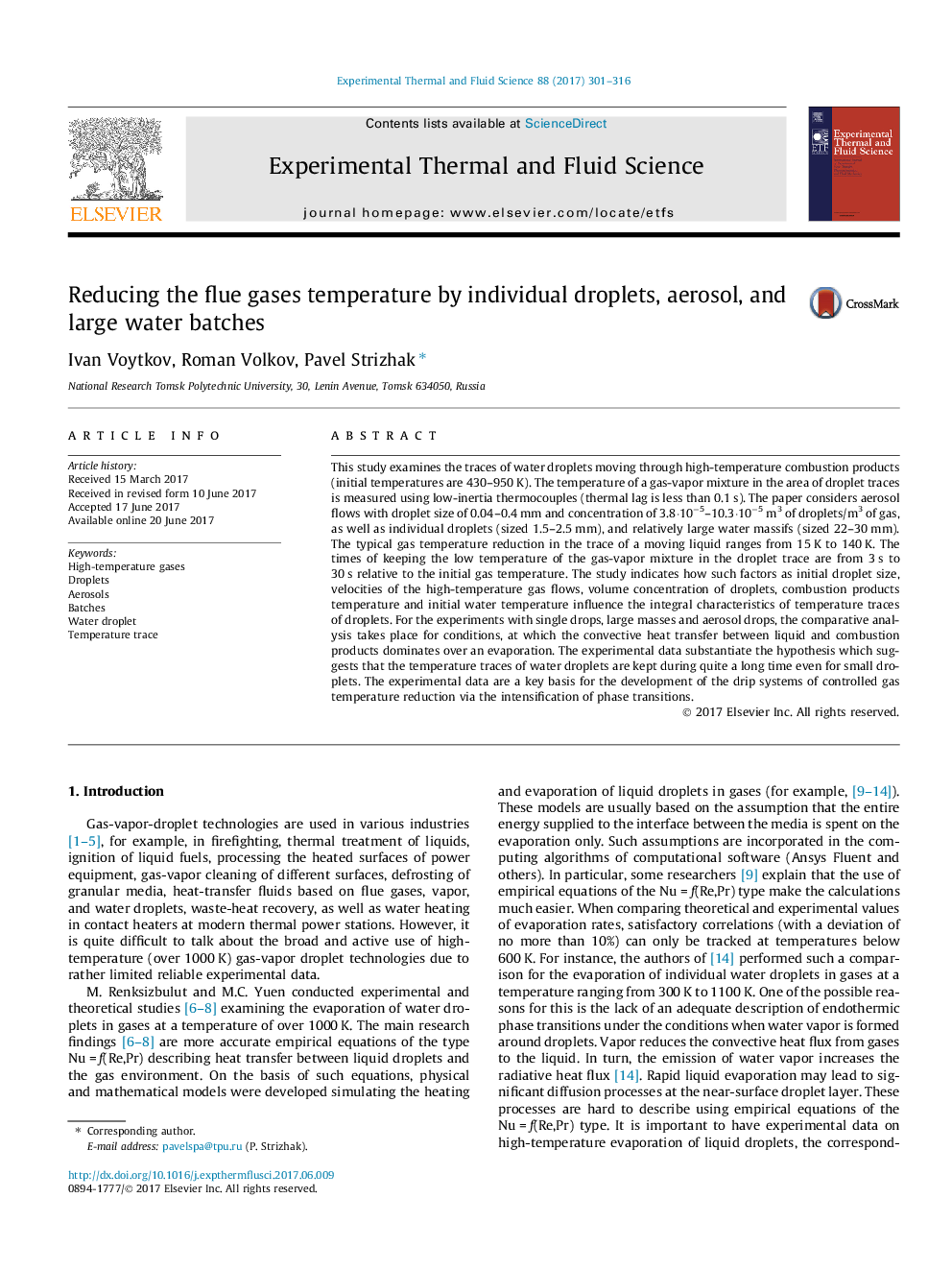| کد مقاله | کد نشریه | سال انتشار | مقاله انگلیسی | نسخه تمام متن |
|---|---|---|---|---|
| 4992586 | 1457388 | 2017 | 16 صفحه PDF | دانلود رایگان |
- Temperature of gases in the trace of drip aerosol decreases by 15-140Â K.
- Times of keeping low temperatures in the trace of water droplets reach 30Â s.
- Size of droplets and their number influence the temperature trace considerably.
- Initial droplet temperature influences gas temperature in their trace marginally.
- Water evaporation plays key role in forming temperature trace of drip aerosol.
This study examines the traces of water droplets moving through high-temperature combustion products (initial temperatures are 430-950 K). The temperature of a gas-vapor mixture in the area of droplet traces is measured using low-inertia thermocouples (thermal lag is less than 0.1 s). The paper considers aerosol flows with droplet size of 0.04-0.4 mm and concentration of 3.8·10â5-10.3·10â5 m3 of droplets/m3 of gas, as well as individual droplets (sized 1.5-2.5 mm), and relatively large water massifs (sized 22-30 mm). The typical gas temperature reduction in the trace of a moving liquid ranges from 15 K to 140 K. The times of keeping the low temperature of the gas-vapor mixture in the droplet trace are from 3 s to 30 s relative to the initial gas temperature. The study indicates how such factors as initial droplet size, velocities of the high-temperature gas flows, volume concentration of droplets, combustion products temperature and initial water temperature influence the integral characteristics of temperature traces of droplets. For the experiments with single drops, large masses and aerosol drops, the comparative analysis takes place for conditions, at which the convective heat transfer between liquid and combustion products dominates over an evaporation. The experimental data substantiate the hypothesis which suggests that the temperature traces of water droplets are kept during quite a long time even for small droplets. The experimental data are a key basis for the development of the drip systems of controlled gas temperature reduction via the intensification of phase transitions.
254
Journal: Experimental Thermal and Fluid Science - Volume 88, November 2017, Pages 301-316
